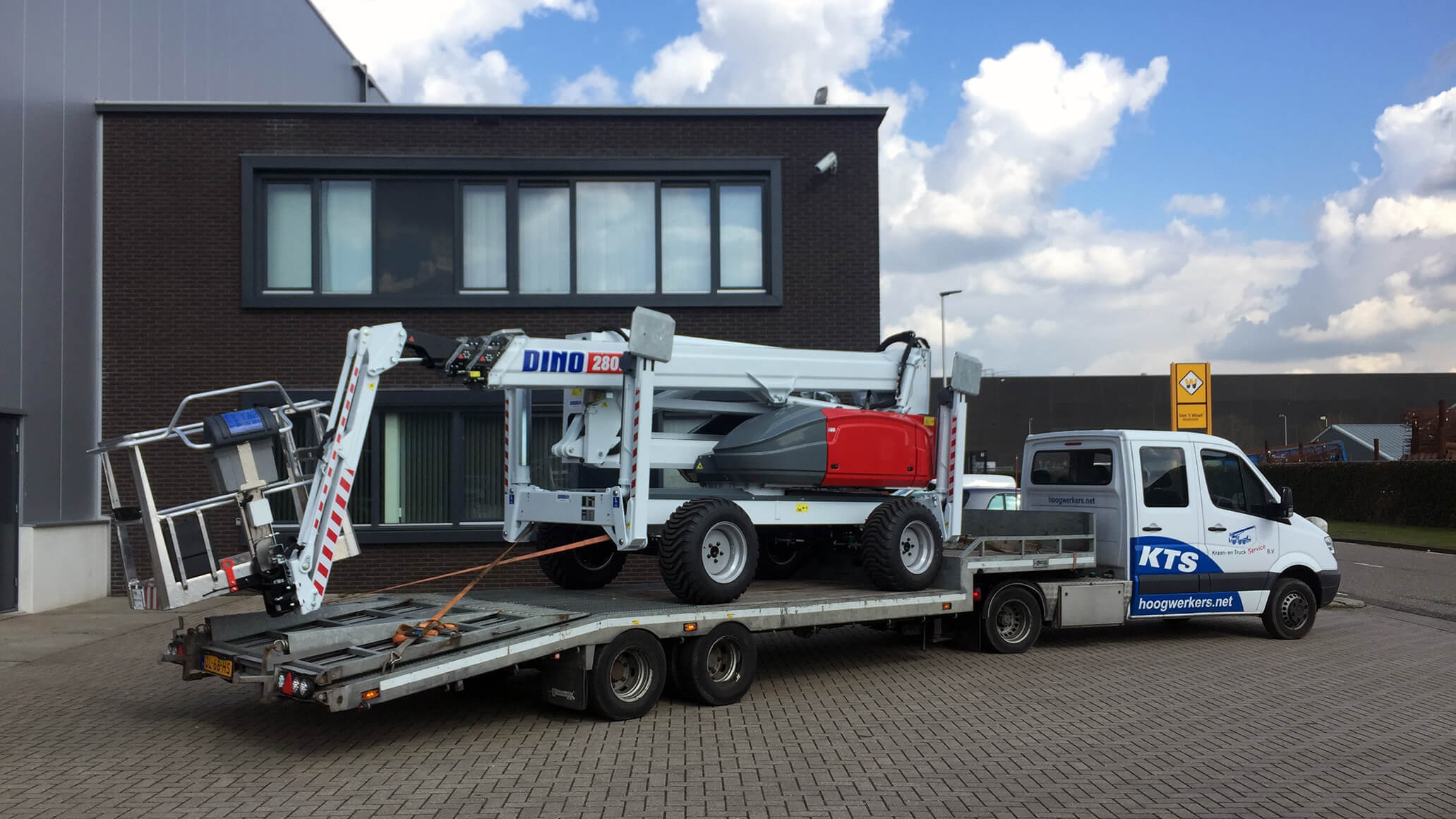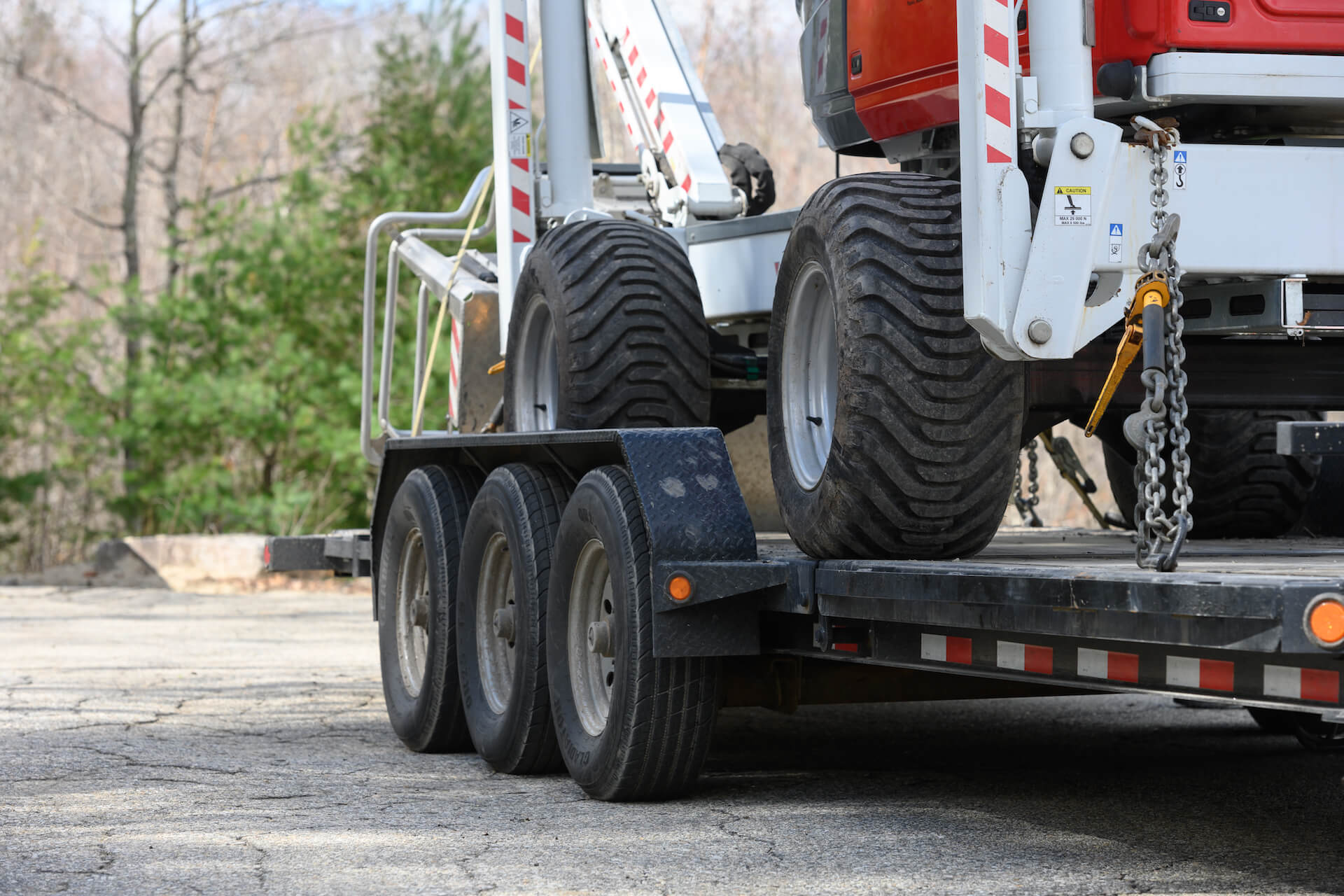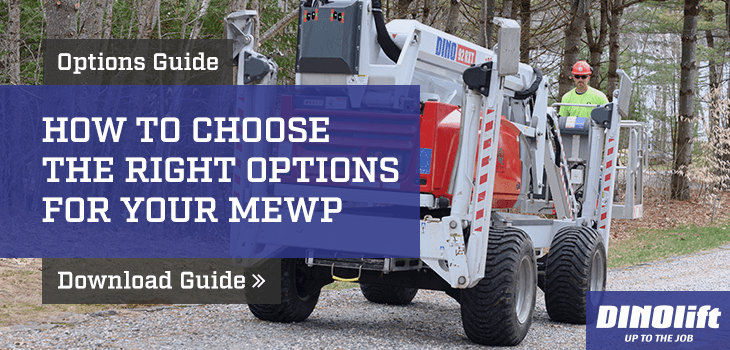Whether you choose a scissor lift, articulated boom or a lightweight boom for your work at hand, you need to transport the lift to the required destination. Proper transit ensures the safety of your equipment and ultimately also the safety of yourself, your fellow operators and the environment. Lightweight booms have many benefits, and where transit is concerned the benefits are many.
Selecting means of transportation
When selecting suitable means of transportation the size, and weight of the boom lift are of importance. The truck and/or trailer needs to accommodate the weight of the lift. Typically lightweight booms are compact in dimensions so there is more room for other machinery on the same load, as well as accommodating other deliveries that are going to the same area.
Lightweight benefits in transit
Another great advantage is that due to its lighter weight there are fewer capacity requirements regarding the loading dock. Lightweight booms will typically meet both transportation height and width restrictions, without the need for additional transportation permits for extra-wide, high, long or heavy loads. Booms that are significantly lighter in weight are versatile and can be driven on surfaces that would otherwise not permit the transportation of heavy loads. In long-haul transportations, an added bonus that provides extra value for money is that you can actually fit not only one but two lightweight booms in a single container.
Drivers licence requirements
The legal requirements regarding types of driver's licences required to operate heavy trucks vary between countries but generally, lightweight booms can be transported using smaller trucks and trailers – a combination that typically requires a lighter classification from a driver´s licence point of view.
Properly prepare your MEWP for transport
Be sure to always check the lift operators manual for safe transportation of any aerial lift. Preparing a lightweight boom for transit starts with checking that the securing straps or chains and ratchets tied down safely. Always remember to put the lift into the transport position.
Transportation checklist:
- Set the lift into transport position when lifting, towing or tying it down for transport
- Remove all loose material from the top of the frame structures and the work platform.
- Tie-down the lift at four (4) tying down points on the chassis. Also, tie down the boom to stabilize the turning device and jib arms.
- Close and lock all protective covers.
- Turn the key switch to “O”, disconnect the lift from the external power supply and turn the main power to OFF.
After transport:
- Turn on the mains switch and activate the control system using the activation button
- Turn the key switch to the limited operating mode for shortened transport position.
- Start the engine
- Lift the boom. The boom will stop at a specified angle that allows for the shortened transport position.
Emissions and cost-efficiency
As we stated above, choosing a lightweight boom has many clear benefits transportation-wise. It is also a sound choice from a cost-effective point of view. As smaller trucks and trailers can be used for transportation, clear savings on fuel costs can be made. Another important argument is emissions and the environmental aspect. According to our research fleet delivery fuel costs and CO2 emissions could be reduced by as much as 21% by transporting lightweight booms instead of conventional booms. Find out more about the environmental benefits from using and choosing light-weight booms by reading our blogpost: Could Diesel-Powered MEWPs be Eco-Friendly?








